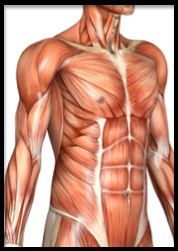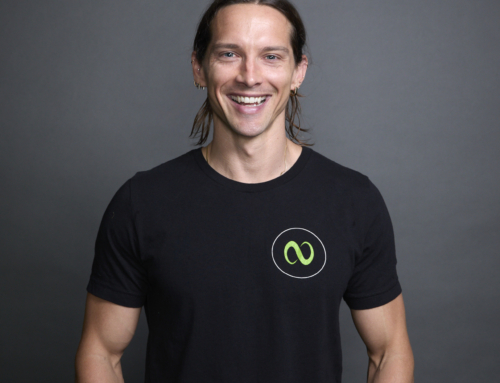by Christina Perinhas …
There are about 650 muscles and millions of individual fibers within our body, so becoming acquainted with each one would be a difficult task. However, when it comes to your body, knowledge is power. The better you understand your major muscles and what they are capable of the more you can actually do with them.

Here is some basic muscle 101: You have three types of muscles: 1) cardiac muscle—only found in your ticker; 2) smooth muscle, which lines such organs as your stomach and esophagus; and 3) skeletal muscle, which attaches to your bones via tendons. Skeletal muscles are the kind that you’re most aware of as you go about your day. They make up 30 to 40 percent of your body mass and are largely voluntary, meaning you decide when they move.
Muscles (and connective tissue) move our bodies by converting chemical energy into tension and contraction. Our bones act as the levers within our body, while our joints are fulcrums. This is where our “push” and “pull” muscles come into play. Main pushing muscles include the pectoral muscles of the chest, deltoids in the shoulders, quads in the front of your legs and triceps in the back of your arm. The pulling muscles include the rhomboids and latissimus in the back, the biceps, the hamstrings in your legs and the trapezius muscles.
Within our body we also have key stabilizer muscles, such as the transversus abdominus (deep in our abdominal area) and the rotator cuff muscles of the shoulders, which act to stabilize our spine and joints. These muscles work to keep you steady so that the mover muscles can do their job. For example, if you’re doing a push-up, the primary movers that are working for you include the big muscles of the chest, shoulders and arms, but your core muscles, back and legs work at the same time to stabilize your body. However, the roles of the “movers” and “stabilizers” are fluid—muscles work together in movement, not in isolation, so often the movers will work to stabilize you as well.
All muscle fibers are not created equal! Slow-twitch fibers are our endurance fibers—great for repetitive motion, but they don’t pack a lot of power. Fast-twitch fibers do the opposite–they offer bursts of rapid-fire energy, but only for a very short period of time. How much of each type of tissue we have is largely genetic and also depends on age. As we age, power tends to go down as endurance tends to increase.
All of this does not mean that you can’t improve your strength, stability, endurance and power with a little hard work, however! How do we do that? Doing any kind of movement, whether it’s repetitive motion like running or a sport requiring powerful bursts of energy, will eventually result in micro-tears of your muscle fiber. Your muscles then send a signal to nearby cells to trigger the formation of proteins at that tear site, and rebuilding process results in growth–increases to the strength and size of that set of muscle tissue. Doing exercises that require more of the muscles to work at the same time will also result in increased coordination and muscular cooperation.
You can tailor your muscle-building workouts to your needs. For example, if you’re looking to jack up your endurance for a marathon, hone your slow-twitch fibers by lifting 3 to 4 sets with lighter weights, pumping out 12 to 15 reps on those days when you don’t run. If you want to improve your dynamic power, try cranking out 2 to 3 sets of 5 to 8 reps at a heavier weight, with more rest between sets. If you’re looking to increase coordination and stability, try compound movements (such as a squat to press) and moves that require balance (such as lunges and step-ups).
Have fun getting reacquainted with your muscles!


